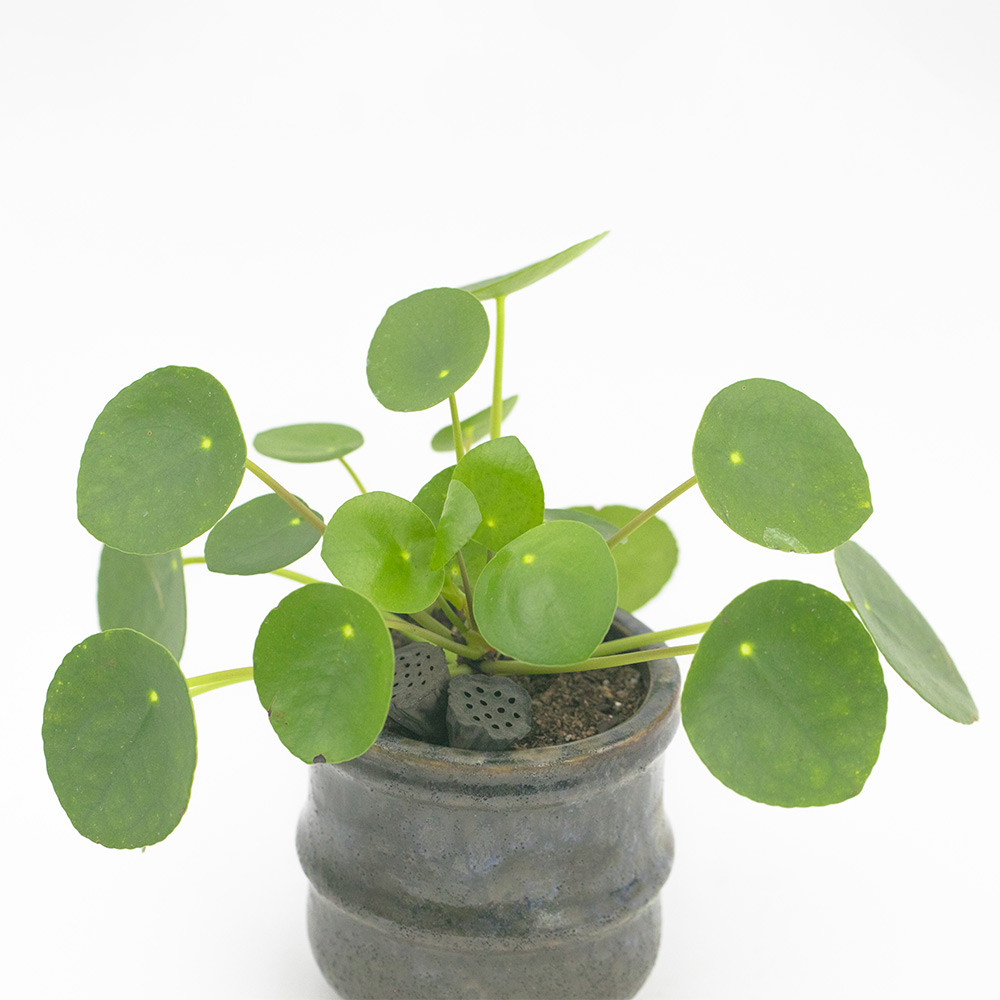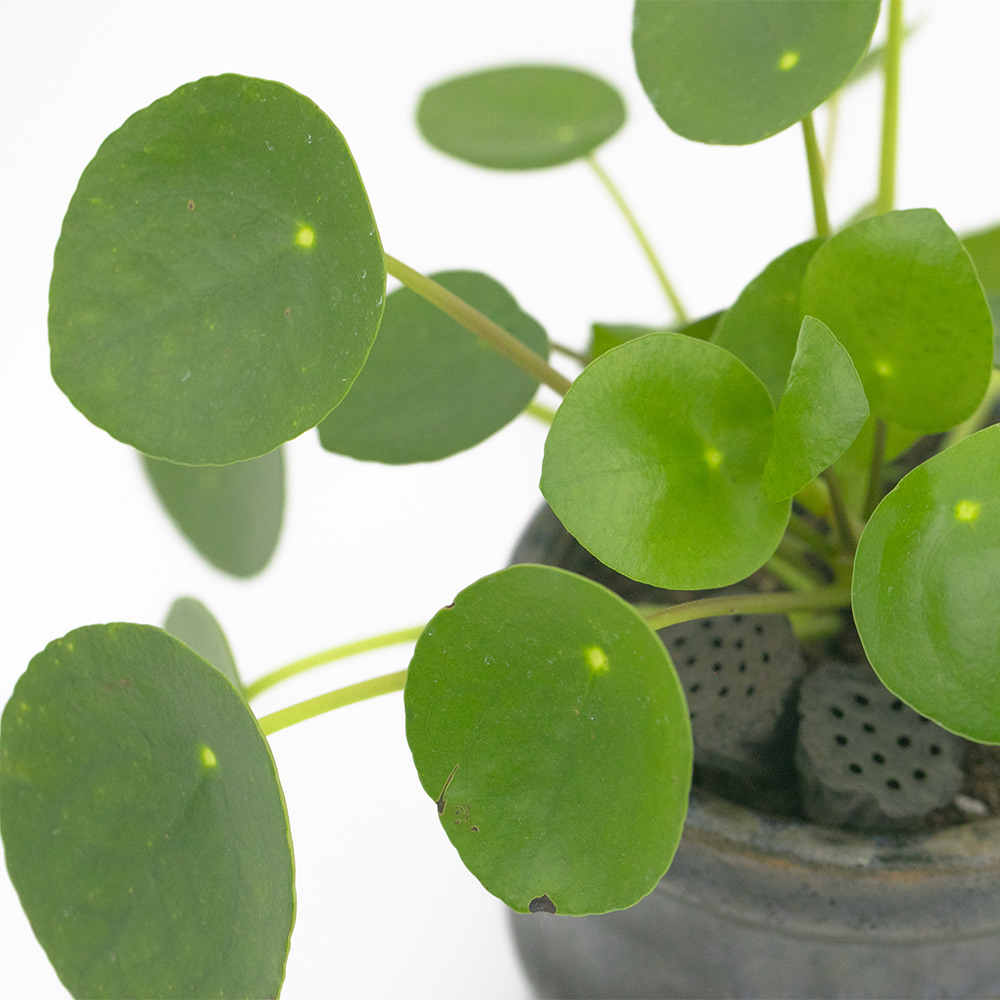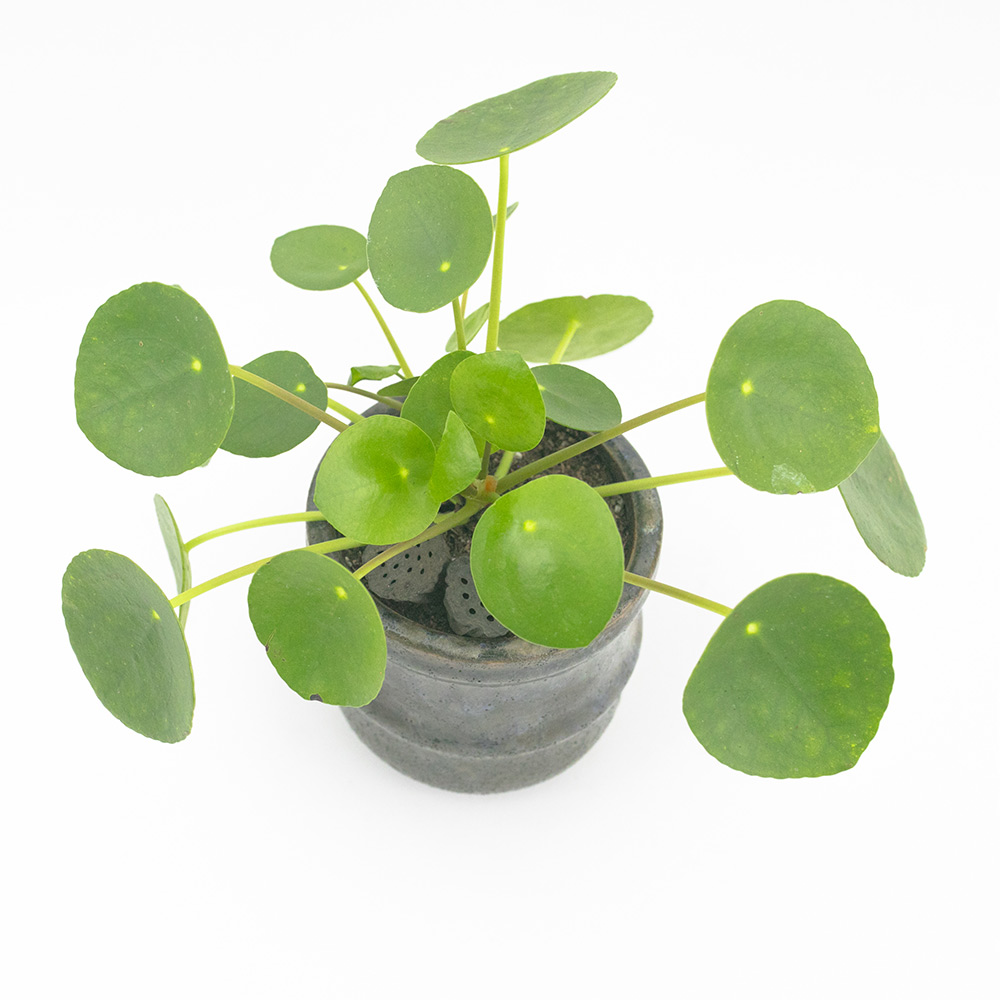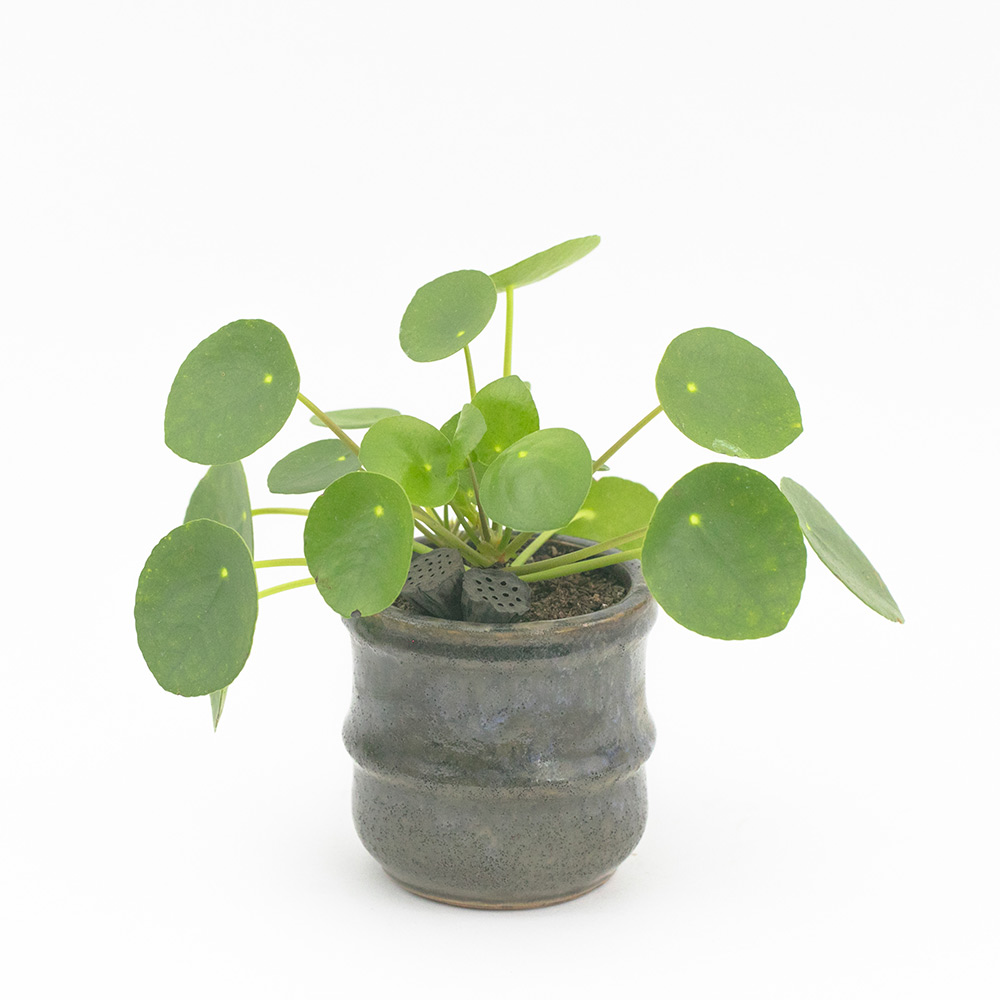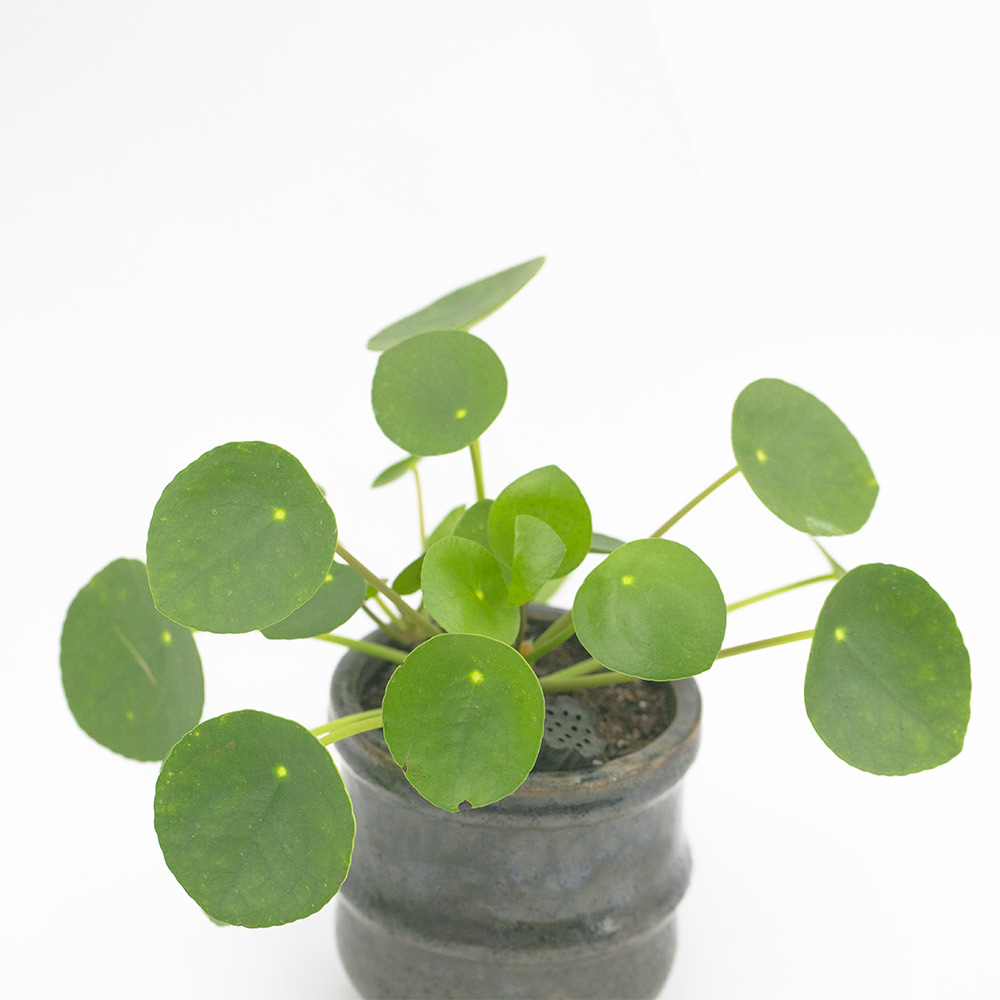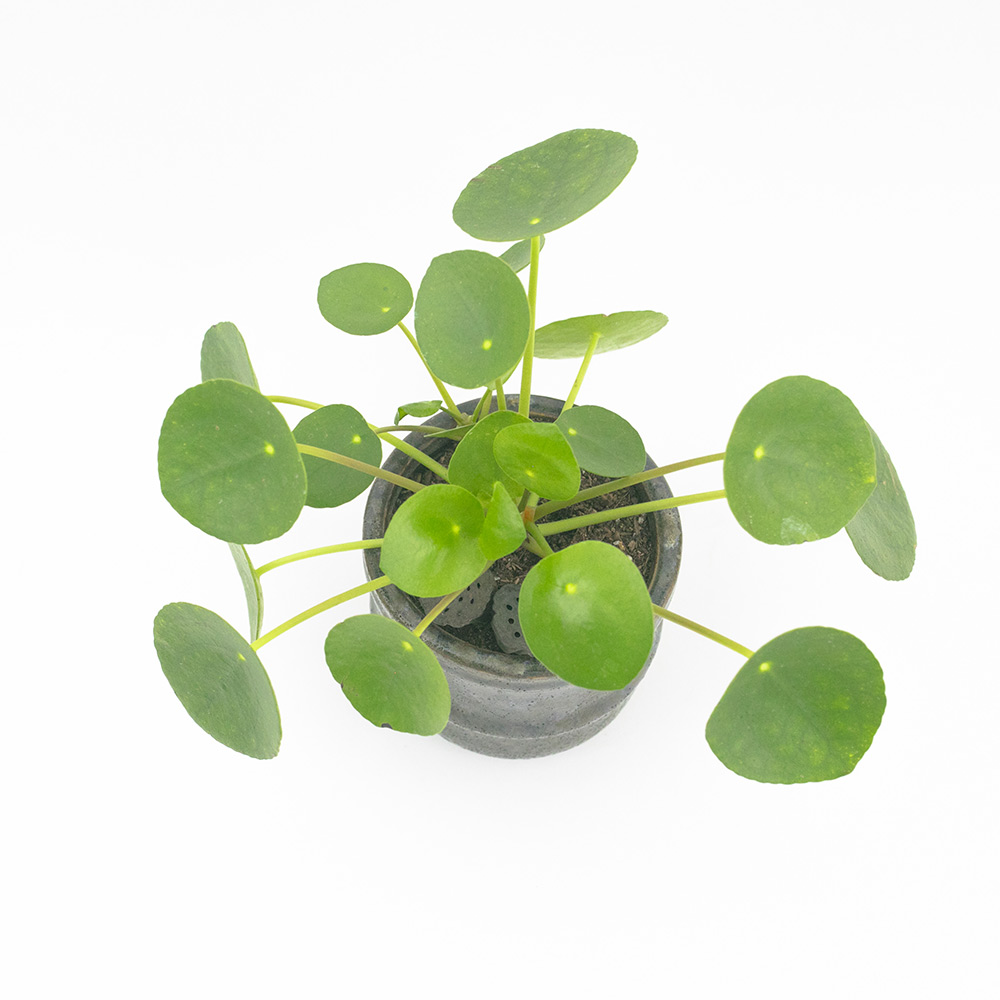There are more than 200 widely varied species in the Pilea genus.
Most of the ones that are suitable for indoor gardening are moderately sized herbaceous plants. They grow about a foot tall and have variegated leaves with depressed veins, giving them a quilted appearance. The dark green leaves of many species are tinged with red, silver or copper.
Others bear a resemblance to their wild cousins, the stinging nettles, but are harmless. Still others have a creeping or trailing habit that makes them particularly useful in hanging baskets. Some species produce inconspicuous flowers in summer. P. cadierei (aluminum-plant) is one of the most popular species. Its wafered, green leaves look like they have been brushed with silver paint. P. cadierei “Silver Tree” is similar, with bronze leaves.
Pileas are most attractive when young and should be pruned back severely or started anew from cuttings on a regular basis.
Light: Place in a bright, indirectly lit south, east or west window.
Water: Keep evenly moist. Water thoroughly and discard drainage.
Humidity: Regures moist air. Use a humidifier for best results. Small varieties do well in terrariums.
Temperatures: 65° to 70° F at night, 75° to 80° F during the day.
Fertilization: Fertilize lightly throughout the growing season.
Propagation: Take stem cuttings at any time.
Grooming: Start new plants to replace old specimens as they get weak. Keep to desired size and shape with pruning or clipping at any time.
Repotting: Repot each year in late spring.
Problems: Subject to crown rot in overly moist conditions. Very susceptible to cold drafts or cold irrigation water. Will get spindly and weak in low light.
